
HMAS Kiama, named for the coastal town of Kiama, New South Wales, was one of 60 Bathurst-class corvettes constructed during World War II, and one of 36 initially manned and commissioned solely by the Royal Australian Navy (RAN).

The Buller River is a river in the South Island of New Zealand. The Buller has the highest flow of any river in the country during floods, though it is only the 13th longest river; it runs for 177 km (110 mi) from Lake Rotoiti through the Buller Gorge and into the Tasman Sea near the town of Westport. A saddle at 710 m (2,330 ft) separates the Buller from the Motupiko River and that is divided from the Wairau River by a 695 m (2,280 ft) saddle, both aligned along the Alpine Fault, as is the top of the Buller valley.

Viaduct Harbour, formerly known as Viaduct Basin, is a former commercial harbour on the Auckland waterfront that has been turned into a development of mostly upscale apartments, office space and restaurants. It is located on the site of a formerly run-down area of the Freemans Bay / Auckland CBD waterfront in Auckland, New Zealand. As a centre of activity of the 2000 America's Cup hosted by the Royal New Zealand Yacht Squadron, as well as the 2022 Rally New Zealand, the precinct enjoyed considerable popularity with locals and foreign visitors.
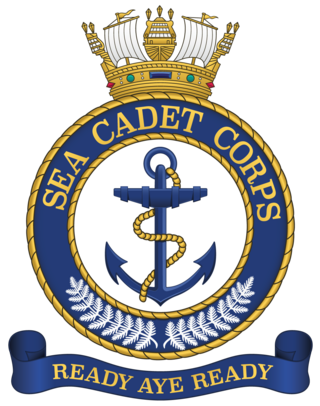
The NewZealandSea Cadet Corps is one of the three corps in the New Zealand Cadet Forces, the other two being the Air Training Corps, and New Zealand Cadet Corps. It is a military-style training organisation for young people between the ages of 13 and 21. Activities include sailing, and boat work, ropework shooting and drill, amongst other activities, many of which involving the other branches of the NZCF. Cadets need to pass an annual swimming test to undertake water-based activities.

The Stillwater Ngākawau Line (SNL), formerly the Stillwater–Westport Line (SWL) and the Ngakawau Branch, is a secondary main line, part of New Zealand's national rail network. It runs between Stillwater and Ngakawau via Westport on the West Coast of the South Island. It was one of the longest construction projects in New Zealand's history, with its first section, at the south end, opened in 1889, and the beginnings of the Ngākawau Branch, at its Westport end, in 1875. The full line was completed in 1942. The only slower railway projects were Palmerston North to Gisborne, 1872 to 1942, and the Main North Line to Picton, 1872 to 1945.

Seddonville is a lightly populated locality on the West Coast of New Zealand's South Island. It is most famous for the historical role it played in New Zealand's coal mining industry.
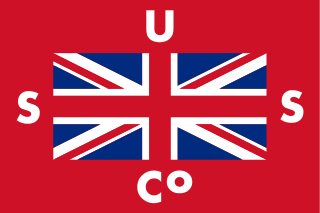
Union Steam Ship Company of New Zealand Limited was once the biggest shipping line in the southern hemisphere and New Zealand's largest private-sector employer. It was incorporated by James Mills in Dunedin in 1875 with the backing of a Scottish shipbuilder, Peter Denny. Bought by shipping giant P&O around the time of World War I it was sold in 1972 to an Australasian consortium and closed at the end of the twentieth century.
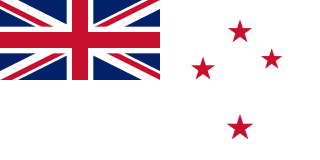
Commissioned minesweepers and danlayers of the Royal New Zealand Navy (RNZN) from its formation on 1 October 1941 to the present. The RNZN was created two years into World War II. For coherence this article covers the war years from the start, and thus includes also the New Zealand minesweepers operating from the beginning of the war.
Henry Niccol was probably the first shipbuilder in Auckland, New Zealand. He was born in 1819 in Greenock. He was the father of George Turnbull Niccol and Malcolm Niccol (1844-1925).
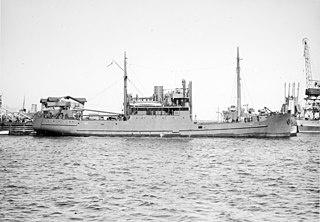
HMAS Bingera was an auxiliary anti-submarine vessel of the Royal Australian Navy (RAN) during the Second World War. Bingera was built by William Denny and Brothers, Dumbarton in 1935 for the Australasian United Steam Navigation Company for the Queensland coastal trade, arriving at Brisbane on 18 November 1935.

The Northern Steam Ship Company Ltd (NSS) served the northern half of the North Island of New Zealand from 1881 to 1974. Its headquarters, the Northern Steam Ship Company Building, remains in use on Quay St, Auckland as a bar.
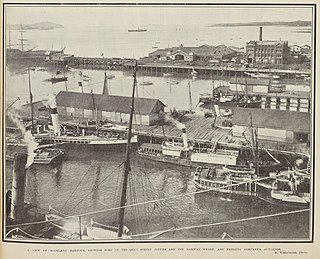
SS Rotomahana was an 1876 harbour steamer and the first iron vessel to be built in Auckland, though launched only 28 minutes ahead of another, though smaller, iron ship. Rotomahana was a name used by at least two other ships of the era, presumably because Rotomahana and its Pink and White Terraces had become better known after the Duke of Edinburgh visited in 1870.

PS Governor Wynyard, was a small steam ship, the first to be built in New Zealand, and was launched in 1851. She was a paddle steamer schooner, built of pohutukawa, with kauri planks. In 1853 she left her Tamaki River service in Auckland and was sold in Melbourne in 1852 during the gold rush, but was soon serving as a ferry in Tasmania, until she had her primitive engines removed in 1858. She sprang a leak and became a beached wreck in 1873.

SS Go Ahead was a twin screw-steamer, launched on the afternoon of Saturday 20 April 1867 by Seath and Connell, of Rutherglen, for the Clyde Shipping Company, with a plan to use her in New Zealand coastal trading. She had 30, or 35 hp (26 kW), high pressure engines, and tubular boilers from Campbell & Son's foundry.

The Anchor Shipping and Foundry Company linked Nelson with other parts of New Zealand from 1870 to 1974. The company's former office remains on the quay at Nelson, as do steps of their foundry, which built one of their ships, repaired their fleet and made other machinery.

HMNZS Rimu was one of three composite New Zealand-built Castle-class trawlers commissioned by the Royal New Zealand Navy during World War II.

HMNZS Manuka was one of three composite New Zealand-built Castle-class trawlers commissioned by the Royal New Zealand Navy during World War II.
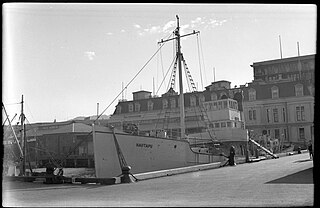
HMNZS Hautapu was one of eight steel New Zealand-built Castle-class trawlers built and commissioned by the Royal New Zealand Navy during World War II.

HMNZS Maimai was one of eight steel New Zealand-built Castle-class ships built and commissioned by the Royal New Zealand Navy during World War II.
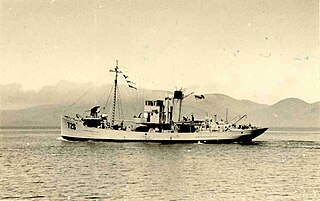
HMNZS Pahau was one of eight steel New Zealand-built Castle-class trawlers built and commissioned by the Royal New Zealand Navy during World War II.



















